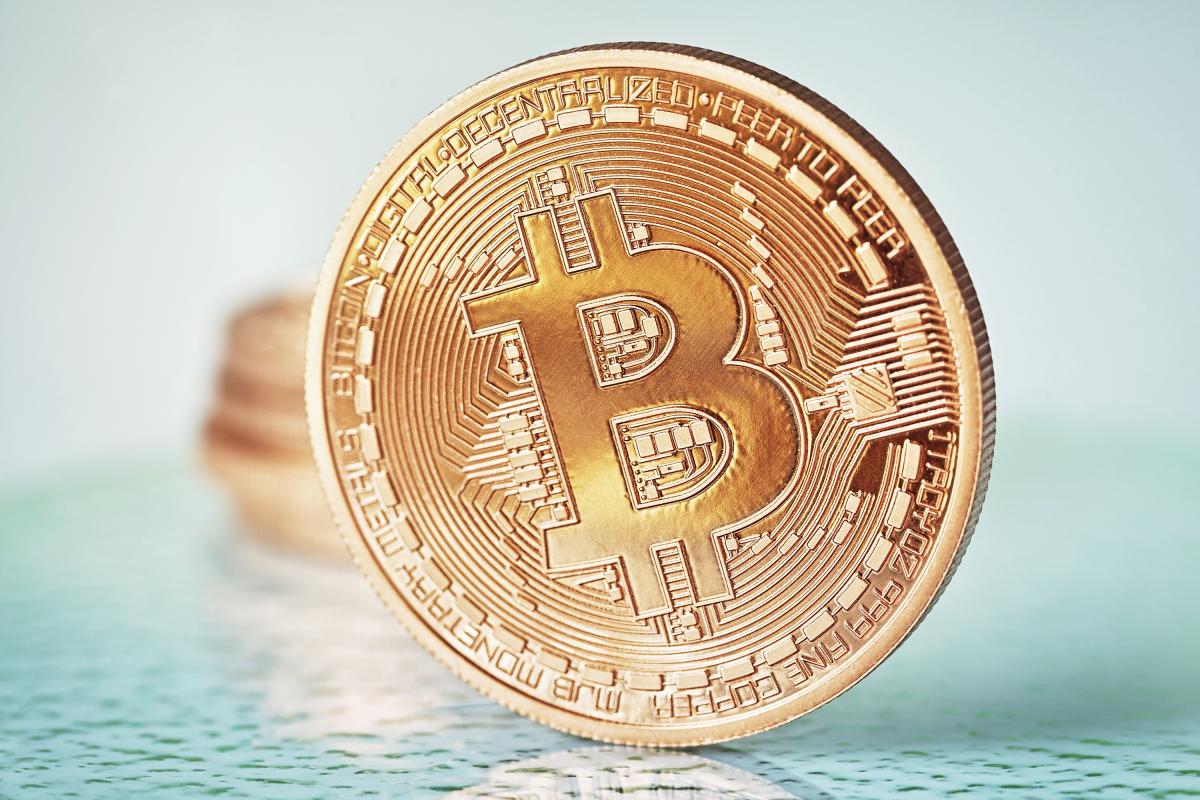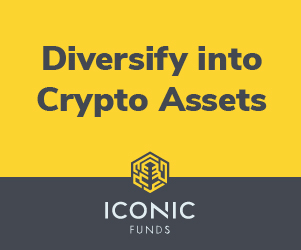Why the perfect storm is brewing for Bitcoin

A pandemic has struck in the form of Covid-19, grinding the global economy to a halt. Politicians are desperately scrambling to enact legislation to protect their constituents as corporate chief executives jockey for the position of being the first constituent in line for their bailout. Unprecedented payments are being made by governments to their citizens to help meet their short-term obligations, and financial markets have utterly collapsed to the tune of extreme volatility, that in crypto, we call Monday. All the while, millions of people are suffering from a dangerous and deadly disease that has united the global community in a way we may have never seen before, working together and practicing social distancing to combat an invisible, common threat.
Much is being made of the doom and gloom surrounding Covid, but I do not intend to continue this here as you can find it in any media outlet 24/7. The seriousness of the threat the disease presents and the suffering it has caused cannot be dismissed, nor should it be made light of. Ever the optimist though, I prefer to focus on the positives, and even in times of global crisis, I am often reminded of a quote from a speech given by the late, great, President John F Kennedy: “The Chinese use two brush strokes to write the word 'crisis’. One brush stroke stands for danger; the other for opportunity. In a crisis, be aware of the danger—but recognise the opportunity.”
 The opportunity for Bitcoin, and the crypto industry as a whole, is now. Ignoring the self-evident health risks surrounding the pandemic and focusing our attention elsewhere, I can definitively say we are entering a financial and economic crisis that could prove to be vastly more devastating than the credit crisis of 2008/09. Dark times, indeed.
The opportunity for Bitcoin, and the crypto industry as a whole, is now. Ignoring the self-evident health risks surrounding the pandemic and focusing our attention elsewhere, I can definitively say we are entering a financial and economic crisis that could prove to be vastly more devastating than the credit crisis of 2008/09. Dark times, indeed.
But Bitcoin was born in this dark… moulded by it. Bitcoin did not see the light of day until 2017 and by then it had reached an all-time-high price of roughly $20,000.
Many people believe that Bitcoin will return to these price levels in 2020 once more, and even surpass them, despite Covid. I am one of those in the camp that believe this is possible, but why is this the perfect storm for Bitcoin? Allow me to elaborate on the opportunity it’s currently presented…
In short:
- Bitcoin is the world’s hardest form of money and a deflationary store of value
- Endless money printing by central banks to artificially keep the global economy afloat will lead to the inevitable mass inflation of “soft” fiat money
- Bitcoin is an a-symmetric, non-correlated asset when compared to most traditional assets
- A looming global credit crisis, possibly in the form of defaulting SME and mid-cap corporate loans, will send reverberations through, and dry up, credit markets in a way that will make the mortgage crisis of 2008/09 seem like a walk in the park
Bitcoin as Hard Money
Let me be clear… Bitcoin has completely and utterly failed thus far as a peer-to-peer, cashless payment system. As such, in its current form, it cannot be a replacement for fiat money on a micro-payment level. However, it offers a unique alternative to “soft” fiat money as a store of value given its nature as a “hard” asset.
 “Hard Money” is an economic term that refers to the difficulty with which an assets outstanding amount can be distributed into circulation. There are, and there will only ever be, 21 million Bitcoin outstanding. Currently, there are about 18.3 million mined and in circulation, meaning less than 3 million more Bitcoin will ever exist. Let’s look at how Bitcoin is distributed and put into circulation relative to fiat currency, such as USD.
“Hard Money” is an economic term that refers to the difficulty with which an assets outstanding amount can be distributed into circulation. There are, and there will only ever be, 21 million Bitcoin outstanding. Currently, there are about 18.3 million mined and in circulation, meaning less than 3 million more Bitcoin will ever exist. Let’s look at how Bitcoin is distributed and put into circulation relative to fiat currency, such as USD.
To keep it simple, Bitcoin is a blockchain network distributed across tens of thousands of computers simultaneously. These computers, known as “nodes,” authenticate transactions two counterparties agree to engage in on the network. If the transaction is valid, the thousands of nodes come to a “consensus” and transfer the agreed upon amount of Bitcoin between the two counterparties’ wallets engaged in the transaction (FYI, this is where Bitcoin drives value as decentralised and distributed, but we’ll touch on that in another paper). Thousands of these transactions are simultaneously reviewed by and authenticated by the nodes, then processed together in “blocks” and added to a “chain” of historic transactions. The node whose algorithm authenticated the transactions first is paid an amount of Bitcoin as a reward for “mining” the block the nodes come to a consensus on.
This mining reward is new Bitcoin entering circulation, which can be bought, sold, traded or even used as remittance for services rendered or goods purchased. Every four years or so, the amount of this reward, however, is cut in half, meaning Bitcoin mining groups receive half the reward they previously did. This event is known as the “halving”. Because of the halving, less and less Bitcoin is put into circulation, until eventually the final 21 millionth Bitcoin is mined. Mathematics and coding language ensure this will never change, safeguarding Bitcoin’s position as a hard asset.
 Fiat, on the other hand, can be put into circulation at the unilateral whim of central banks. The United States’ Federal Reserve, in 2020 alone, has printed and distributed trillions… TRILLIONS… of dollars to support government bailout packages and other initiatives. This far surpasses even the bailout amounts in 2008/09 and will inevitably lead to inflation of the dollar. Because it is relatively easy to put into circulation, fiat currency is inherently a “soft” asset that loses its value as more and more of it exists.
Fiat, on the other hand, can be put into circulation at the unilateral whim of central banks. The United States’ Federal Reserve, in 2020 alone, has printed and distributed trillions… TRILLIONS… of dollars to support government bailout packages and other initiatives. This far surpasses even the bailout amounts in 2008/09 and will inevitably lead to inflation of the dollar. Because it is relatively easy to put into circulation, fiat currency is inherently a “soft” asset that loses its value as more and more of it exists.
The contrast is clear… Bitcoin is a deflationary, hard asset, and only getting harder, while fiat is being made softer and will be forced to weather inflation due to the actions governments and their central banks are taking to combat the Covid crisis. Relative to fiat, this will inherently drive Bitcoins value, and perceivably price, but it is not the only major factor at play in the looming perfect storm.
Bitcoin as uncorrelated
Historically, Bitcoin is an uncorrelated asset to nearly all traditional asset classes. Since its inception in 2009 it has appreciated from a price below $.01 to above $20,000 with intermittent spouts of volatility along the way to its price of about $7,000, as of this writing. Over this decade, Bitcoin’s wild volatility and massive returns did not show any statistically relevant correlation to most, if not all, asset classes. This has led many people to declare that Bitcoin is a hedging instrument against traditional markets and other geo-political and economic crises.
 However, many people will note that during the first fiscal quarter of 2020, as the Covid crisis was seeming to ramp up, Bitcoin seemed to mimic the movements of traditional markets. While this is true, most notably on “Black Thursday”, 12 March, where crypto and traditional markets jointly realised one of the worst trading days in history, this does not disprove Bitcoin as an uncorrelated asset. It is worth noting that the sample size of Q1 is awfully small, and that all assets converge on a correlation of one during an immediate liquidity crisis.
However, many people will note that during the first fiscal quarter of 2020, as the Covid crisis was seeming to ramp up, Bitcoin seemed to mimic the movements of traditional markets. While this is true, most notably on “Black Thursday”, 12 March, where crypto and traditional markets jointly realised one of the worst trading days in history, this does not disprove Bitcoin as an uncorrelated asset. It is worth noting that the sample size of Q1 is awfully small, and that all assets converge on a correlation of one during an immediate liquidity crisis.
The main take away is that while Bitcoin may not be a hedging instrument against an immediate liquidity crisis, where every investor flocks to USD, it still has yet to be tested as a hedging instrument to a global financial crisis, much like the one it was born in. In the last few months alone we have seen tens of millions file for unemployment, local, non-essential businesses be forced to close and large corporates require billions in bailouts to stay afloat. It is truly unprecedented.
Unless the money printers at central banks overclock and continue to prop-up weak companies through bailouts, we will soon realise a massive call on outstanding SME and corporate debt, possibly far exceeding the amount of defaults in the 2008/09 mortgage crisis. It is likely some small governments may default on their debt as well. Collectively, this will trigger a failing of various debt-backed-securities, a call on credit-default-swaps and, well, if you were paying attention last time the carousel went around like this, you get the picture.

As global financial markets begin to crumble, investors and institutions often flock to “safe haven” assets, especially ones that maintain liquidity. After all, once a crisis concludes, those with liquidity are the kings and queens of the next market cycle. While gold is a good example of this historically, Bitcoin, while not a traditional “safe haven” asset given its volatility, offers an interesting alternative to gold as a non-correlated store of value during what may be the most tumultuous economic period of this century. Many are recognising this and flocking to Bitcoin as a store of value as institutions such as Grayscale are reporting record subscriptions to their investment vehicles offering exposure to Bitcoin in Q1.
This is the first true crisis the young currency has had to endure. For those paying attention and are members of our ever-growing crypto community, the stars are seeming to align favorably for Bitcoin and crypto assets as a whole, even in such trying times.
With great crises comes great opportunity. It is time to test Bitcoin’s resolve in 2020 and see what it is truly made of. We will likely learn whether Bitcoin has the mettle to thrive this year, or if it all for naught. Educate yourself on these opportunities. Do your own research, and in case you do not know where to begin, we at Iconic are always available to help those interested to learn more. Feel free to reach out at any time!
I would like to conclude by wishing you the best of luck and for health for you and your loved ones. Please stay safe, practice social distancing, and do not succumb to fear. All crises pass, and for those glass-half-full types out there like me, opportunity abounds!
Tell us your investment attitude to bitcoin and crypto assets in our new research survey with Iconic Holding. Click here to complete the survey.







